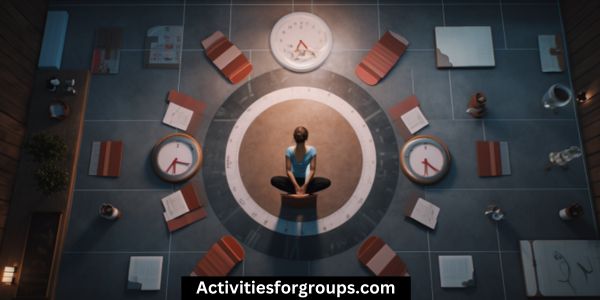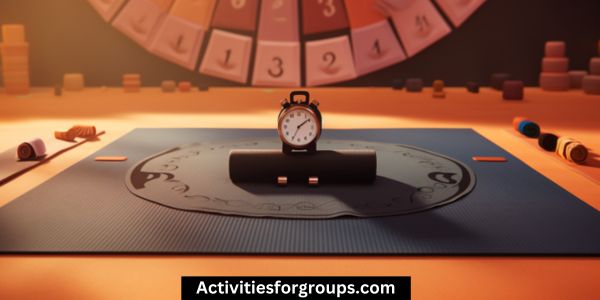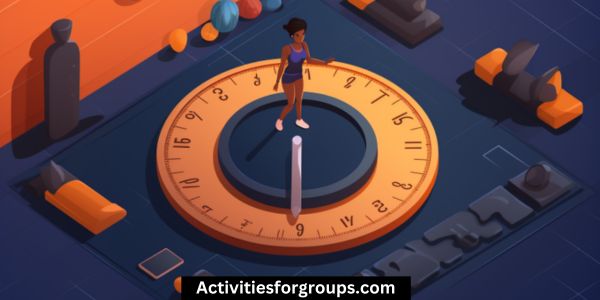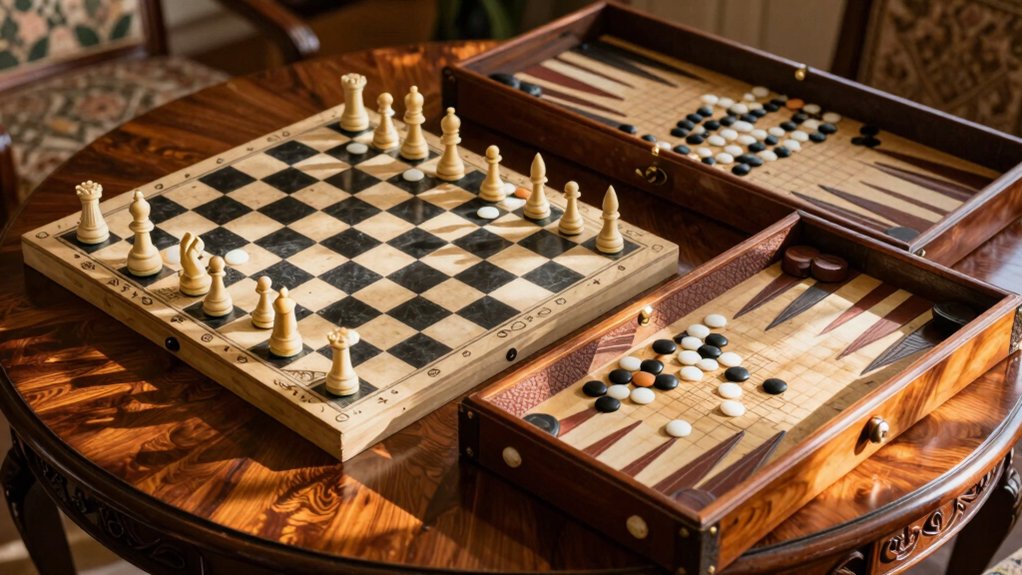Are you looking to organize group yoga sessions?
You’ll need the right equipment to ensure that your class runs smoothly and your participants can get the most out of their practice.

From yoga mats to straps and blocks, props, clothing, and accessories, you’ll need to consider the bare essentials to make sure your class is a success.
Let’s take a look at what you’ll need.
Yoga Mats
For organizing group yoga sessions, you’ll need to provide yoga mats. Not only do yoga mats provide a comfortable and supportive surface during practice, but they also help to create a sense of community among the members of your group.
Many yoga studios have both rental and purchase options, so consider that when budgeting for your class. Additionally, while you should always strive to keep it consistent, yoga etiquette and class structure may dictate the type of mat you should provide.
For example, if the particular style of yoga you’ll be teaching requires more grip, you’ll need to provide a mat with more texture. Likewise, if you’re teaching hot yoga, you’ll need to provide mats that can withstand the heat and sweat. Ultimately, the kind of mat you choose will depend on the type of class you’re teaching and the skill level of your students.
However, it’s important to remember that whatever mat you choose should ensure the safety and comfort of your students.
Straps & Blocks
In addition to a yoga mat, you’ll also need straps and blocks for organizing group yoga sessions. Straps are used to help stretch the body and deepen poses. They’re also great for helping beginners and those with limited mobility get into postures.
Blocks can be used to help create a foundation of support in poses, allowing practitioners to go deeper into the pose while maintaining proper alignment. Blocks are especially helpful for those who are new to yoga or have difficulty listening to their body.
Using straps and blocks can help a yoga session feel more safe and secure for the participants. They can help practitioners maintain proper alignment and find the depth of a pose without risking injury.
Straps can also be used to help participants get a greater stretch in certain poses, allowing them to open up the body further. It’s important to remember to listen to your body when using straps and blocks and always adjust the depth of the pose accordingly.
Straps and blocks can be great tools for experienced practitioners as well as those new to the practice.
With the right instruction, these tools can help you deepen your poses, open up the body, and ensure proper alignment and safety. With the right equipment, a group yoga session can be both safe and enjoyable for everyone.
Props

Besides straps and blocks, props are also important for organizing group yoga sessions. Depending on the type of class, props can range from simple items like blankets and belts to more specialized pieces like meditation cushions and yoga bolsters.
| Props | Description |
|---|---|
| Blankets | Blankets can provide extra padding and comfort during poses. They can also be used as a makeshift bolster or cushion for seated poses. |
| Belts | Belts are often used in hatha yoga to improve flexibility or to reach certain poses. |
| Meditation Cushions | Meditation cushions are used to support the user while in seated poses. They come in various shapes and sizes to fit the user’s needs. |
| Yoga Bolsters | Bolsters are used to support the body during restorative poses. They provide comfort and stability and come in various shapes and sizes. |
Props can be beneficial for a variety of yoga poses and can also help the user find the right alignment. It is important to have a variety of props available to all students in a group class to ensure everyone can participate and get the most out of each pose.
Clothing
When organizing group yoga sessions, it’s important to consider what type of clothing participants should wear. Lightweight, breathable clothing such as leggings and tank tops are ideal for yoga, as they allow for a full range of movement and maximum comfort.
Additionally, having the right clothing can provide both physical and emotional benefits. For example, wearing yoga clothes can help participants feel more confident and secure in their movements, which can lead to improved focus and concentration.
It is also important to ensure that clothing is neither too loose nor too tight. Loose clothing can get in the way of certain poses, while tight clothing can cause discomfort and restrict movement.
Furthermore, ensure that clothing is non-restrictive and allows participants to move freely. Additionally, it’s important to choose clothing that’s made from sweat-wicking material, as this will help keep participants cool and dry during their practice.
Finally, it’s important to consider the environment in which the yoga session is taking place. For example, if the session is outdoors, it’s essential to ensure that participants are dressed in layers to keep them warm. Similarly, if the session is indoors, it’s important to ensure that participants aren’t too warm or too cold.
Accessories

To continue the discussion on clothing, you’ll also need to consider accessories when organizing group yoga sessions. Accessories can help set the ambiance in the yoga space and provide convenience and comfort for participants. Here are some important accessories to consider:
- Meditation cushions: Meditation cushions provide comfort and support when sitting in meditation. They’re often filled with buckwheat hulls or other materials to provide the ideal amount of cushion and support for your body.
- Yoga towels: Yoga towels are a great way to keep sweat off your mat and help keep you from slipping and sliding during challenging poses. They also provide extra cushioning and comfort when placed beneath your hips or knees.
- Yoga blocks: Yoga blocks are a great way to help beginners learn poses and provide extra support.
- Yoga straps: Yoga straps help extend the reach of your arms and legs and are especially useful when practicing challenging poses. They can also be used to help deepen your stretches.
Frequently Asked Questions [FAQs]
What Type of Space Is Best for a Group Yoga Session?
For group yoga sessions, an outdoor space is ideal for taking in natural beauty and connecting with nature. However, if outdoor space isn’t available, an indoor space with plenty of room and natural lighting is also suitable.
How Many People Should Be in a Group Yoga Session?
You should provide instruction and set expectations for group size when organizing a yoga session. Generally, classes should have no more than 10-15 people.
Are There Any Safety Considerations to Keep in Mind When Organizing a Group Yoga Session?
Yes, there are safety considerations to keep in mind. Make sure everyone is aware of yoga etiquette and that physical adjustments are made with permission. Ensure the space is comfortable and the group size is manageable.
What Is the Best Way to Manage the Logistics of a Group Yoga Session?
Consider the group dynamics, meditation music, and space needed to set up the session. Organizing a group yoga session requires careful planning and attention to detail, so make sure to map out the logistics beforehand.
Are There Any Special Guidelines for Leading a Group Yoga Session?
When leading a group yoga session, consider teaching techniques and group dynamics to ensure a successful practice. Use active voice, contractions, and clear instructions to guide your group.
Conclusion
Organizing group yoga sessions is easier than you think! All you need is yoga mats, straps and blocks, props, comfortable clothing, and a few accessories.
With these items, you’re all set to start your group yoga sessions and create a peaceful and restorative environment for everyone.
So don’t wait – get your gear and start your journey to a healthier and happier life!




Leave a Reply